If you still play your original PlayStation and you’ve been looking for a new game with a tense 90’s vibe, then Signalis will look stunning among your old school collection. I mean this entirely as a compliment, too.
Rose-Engine had been working on Signalis since 2014, although the original vision was much more 2D-side scroller-esque, eventually evolving into something of a survival horror masterpiece in the form of a 3D top down shooter. Being comprised of two developers and only having assistance with the musical score, makes this creation from Rose-Engine very impressive.
Helping to bring this low poly PlayStation styled survival horror to life is publisher Humble Games. Responsible for publishing other well received games like Flynn: Son Of Crimson and Midnight Fight Express.
Taking heavy inspiration from Resident Evil and Silent Hill, two franchises widely regarded by many as the kings of the genre and Signalis isn’t afraid to wear those references on it’s sleeve, either.

Story
Signalis takes place during an era with advanced technology and space travel, in an unidentified planetary system, governed by the totalitarian Nation of Eusan. Eusan employs Replikas to carry out the bulk of its military and labour force. Replikas are androids made with copied human neural imprints, a consequence of such being that these androids inherit idiosyncrasies. Making them feel the need to bathe or listen to music and when prohibited from doing so, can cause an android to malfunction or destabilize.
A scout shuttle crash lands on a icy planet and Elster awakens and begins searching for her Gestalt partner, Arianne. Quickly realising the majority of the Gestalt staff are dead and the Replika workforce has gone rogue, attacking her on sight. You’ll be gathering supplies and fighting for your survival whilst trying to piece together what is going on.
Scattered throughout the world are notes and diaries which contain the bulk of the story. The lore is mostly kept to these collectibles, with cutscenes containing some of the story beats, but I found these hard to keep up with in places. You would need to make sure you find every note to get the full picture and with the game offering multiple endings, a lot of what it means is easily left open to interpretation.
There are these really cool first person sections too, which do give you more of an insight also, but again, it’s mostly all kept to the notes, so keep your eye open. Considering there is no voice acting at all (which I feel might’ve helped deliver the story) it oddly worked quite well for me. If you do manage to get the gist of what’s going on, you’ll stumble upon a dark and beautiful story with Elster.
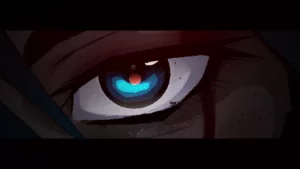
Gameplay
Signalis thrusts you into a twisted and enthralling sci-fi setting filled with sick and infested androids on the hunt for blood. It feels like a perfect blend of so many survival horror games before it, from the atmosphere, combat, camera angles and inventory. It really is a magnificent mixture of old and new.
The “rule of six” is prominently mentioned within a tutorial note. You are only given six slots in your inventory, making you think about what to carry and when, made even more challenging in the later game where you must have a flashlight that takes up it’s own space, reducing you down to five slots.
Throw in just one weapon and ammunition for said weapon and you are not left with much space to play around with. Such limited inventory space boggles your brain as you are made to think about your next move constantly. Do I need that health patch? Do I need that ammo? Is it worth taking on those enemies again? This is without even considering the key items that you must pick up to progress forwards.
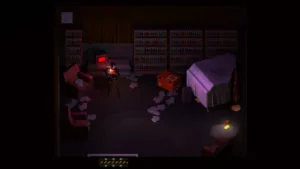
Stumbling across a save room for the first time left me mesmerized by the aesthetics, especially the glowing red television set. More specifically, the spot on audio design. It’s a joy making yet another trip to safety over and over again. The save rooms are also where the game will cut you some slack, where it’s quite harsh on it’s inventory system, you’ll have access to a storage box to help you juggle your items and no limit on how many times you can save your game.
Your story is directly affected by your own personal playstyle, too. Taking a very stealthy approach trying to avoid as many enemies as possible steers you towards one ending, whilst being aggressive and rarely having a full health bar leads you to another.
The atmosphere might influence your approach, as you enter a dimly lit corridor and hear a sudden screech, whilst being unable to see a few feet in front of yourself. The build up of tension as you discover a new area is truly incredible. With no reliance on jump scares, it succeeds at never feeling cheap and maintains tension throughout.
Every room presents you with a tactical decision that could be the difference between life and death. Having to backtrack through a tough area you had already cleared is always a nervous task. Putting enemies down and stomping on them isn’t always the end, burning them with a flare is. But, like ammunition, flares are also in short supply.
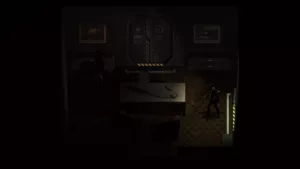
Thrown into the mix with all of this are the puzzles, ranging from engaging to semi-frustrating at times. I found some of the puzzles just clicked at a certain point whilst others left me sat scratching my head in confusion. The puzzles do a great job of feeling unique, it’s just a shame that, at certain points they feel very confusing. The confusion mostly kicked in towards the end of the game for me when you completely loose the in-game map, instantly doubling the backtracking as I was aimlessly guessing where to go.
With multiple weapons at your disposal, this only adds another layer of critical thinking when trying to plan your way around a puzzle. Do you carry a shotgun and try to mow down a room full of androids? Or travel light and try to sneak past everything possible? You will need to think of something, as near the end-game when you lose the in-game map (again, making the puzzles harder) you are met with a slight difficulty spike and some larger boss type enemies.
This is only a minor gripe however, as the little bits of frustration and confusion I was met with wasn’t dampening my time with the game at all. I was genuinely finding it hard to have a bad time with it, despite my minor critiques.
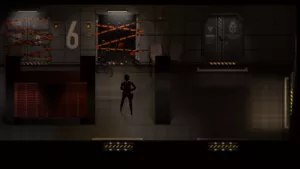
Final Thoughts
Throw together Resident Evil with a bit of Silent Hill and then sprinkle a little bit of anime on top and Signalis is what you are left with. I’m sure you might be able to catch references to other games or anime that I might not have picked up on. It still remains incredible to me that this game was developed by only two people. Even with the minor gripes of mine I mentioned previously, this is still one of the best experiences of 2022 and quite possibly one of the best survival horror games of all time.
The atmosphere alone sunk it’s hooks into me, the pure tension throughout kept me glued to my screen during my 13 hours with it. That’s just one playthrough and with the game offering multiple endings, there is plenty of reason to revisit. It’s definitely on the replay list if I ever find the time to go back to it.
I can’t overstate how well nailed almost every aspect of Signalis is, from the art style, the combat, the inventory system, the audio design, etc. There’s also some cool accessibility options like auto-reloads and text speed. Not forgetting the Film Grain and CRT mode options, which can be turned on or off depending on how old-school you want your experience to feel.
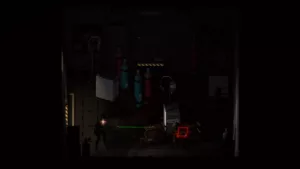
Signalis is a survival horror masterpiece that any horror fan would be a fool to miss out on. A love letter to the PlayStation horror era. Signalis is available on Nintendo Switch, PlayStation, Steam, Xbox and part of your Xbox Game Pass subscription. This is a MUST-PLAY game from Rose-Engine.
Overall
-
CX Score - 95%95%
Summary
Pros
- Atmosphere
- Setting
- Story
- Combat
- Takes The Best From Classic Horror.
Cons
- Difficulty Spike Near End-Game
- Story Confusing In Parts.

